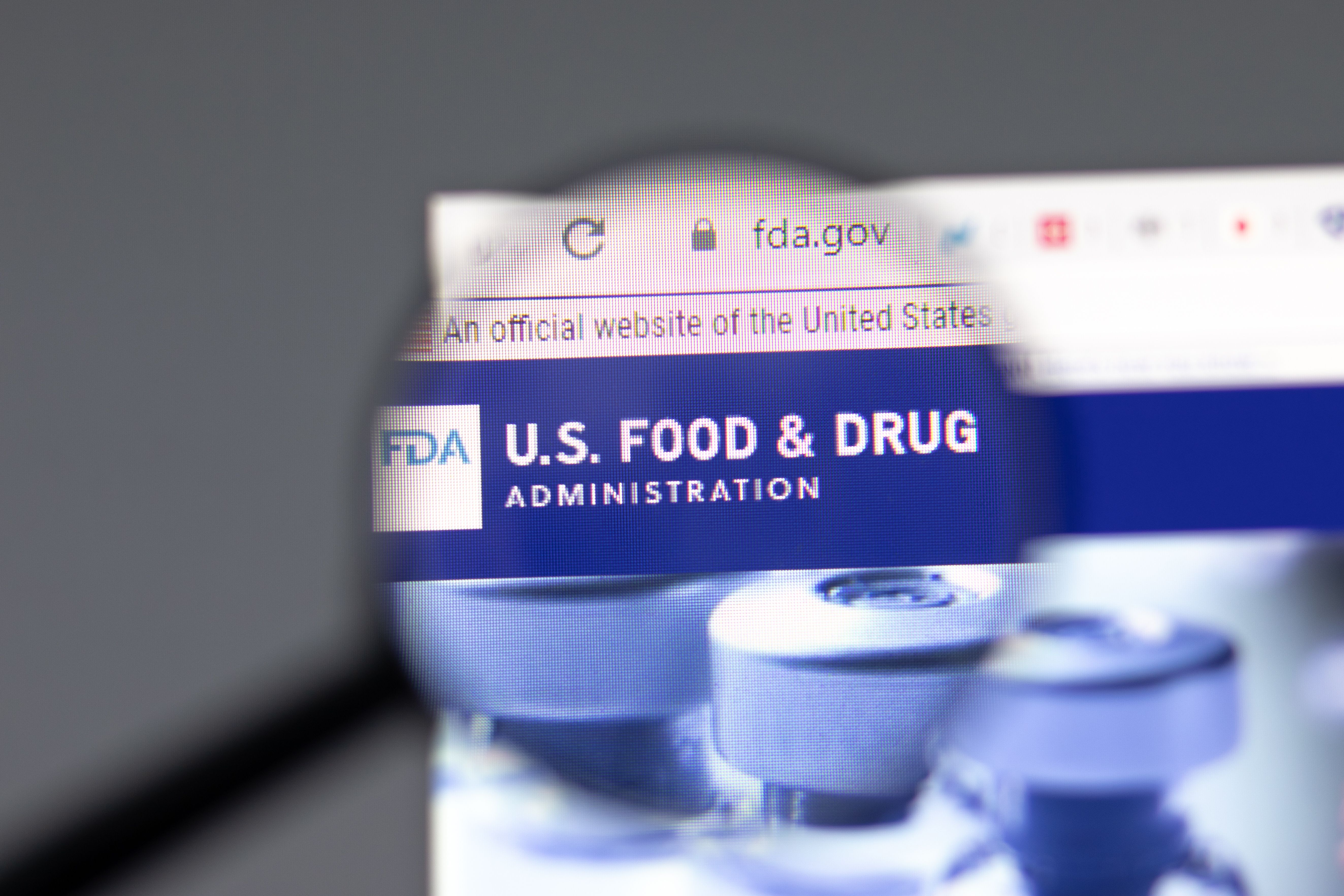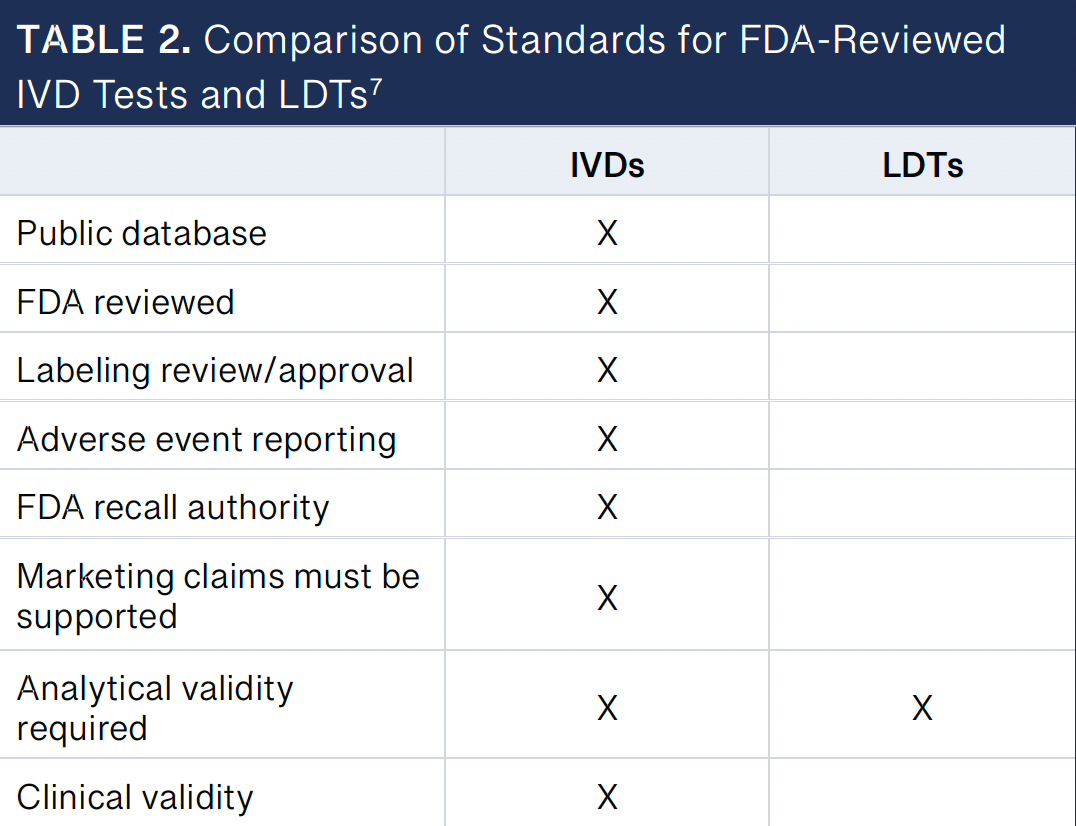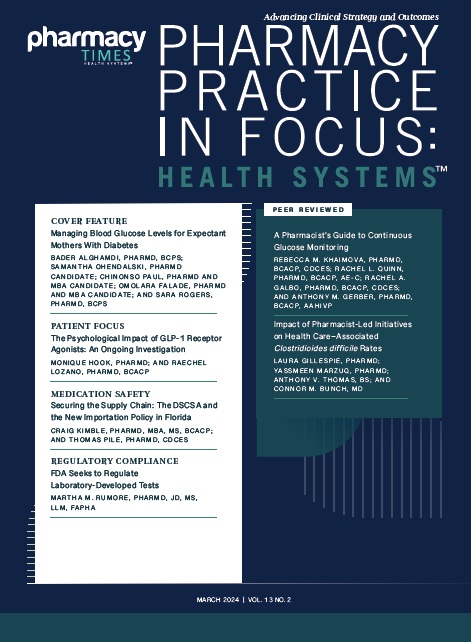About the Author
Martha M. Rumore, PharmD, JD, MS, LLM, FAPhA, is senior counsel in the Life Sciences Department at Frier Levitt in New York, New York.
The agency is looking to regulate them as medical devices.
Image credit: Postmodern Studio | stock.adobe.com

Martha M. Rumore, PharmD, JD, MS, LLM, FAPhA, is senior counsel in the Life Sciences Department at Frier Levitt in New York, New York.
Recently, the FDA has begun to ramp up efforts to end its enforcement discretion policy for laboratory-developed tests (LDTs) and to regulate them as medical devices. LDTs are a subset of in vitro diagnostic devices (IVDs) or in vitro clinical tests (IVCTs); per 21 Code of Federal Regulations 809.3(a), IVDs are “those reagents, instruments, and systems intended for use in the diagnosis of disease or other conditions” and are used in the collection, preparation, and examination of specimens from the human body.1 The FDA defines an LDT as an IVD that is intended for clinical use and is designed, manufactured, and used within a single laboratory certified under the Clinical Laboratory Improvement Amendments (CLIA), which is overseen by the Centers for Medicare & Medicaid Services (CMS).1 The single laboratory must additionally meet the requirements to perform tests of high complexity and have a location that has its own CLIA certificate.1-5
However, CLIA does not evaluate test validation prior to marketing, nor does it assess the analytical validity (ie, specificity, sensitivity) or clinical validity (ie, accuracy) of an LDT. CLIA does not ensure proper design, manufacture, safety, or effectiveness for LDTs. LDTs are not registered, listed in any database, or tracked, so the number on the market, when and why they are used, or how they perform is unknown.
Insurance claims and electronic health records do not distinguish between LDTs and FDA-reviewed diagnostics. Anytime a laboratory makes a change to an FDA-reviewed test, it creates an LDT. Examples of LDTs are found in Table 1.
PCR, polymerase chain reaction; HPV, human papillomavirus; LDT, laboratory-developed tests; UTI, urinary tract infection.

Although LDTs are medical devices, the FDA’s authority to regulate LDTs has been at issue for more than a decade. The FDA has traditionally exercised enforcement discretion with regard to LDTs and has not required these tests to undergo FDA approval as medical devices via premarket approval (PMA), de novo requests, or premarket notification known as 510(k). The exception is direct-to-consumer (DTC) tests, where the FDA’s usual enforcement policies apply, regardless of whether they meet the definition of an LDT. That said, FDA access to such DTC LDTs, most of which are not FDA approved and which are available without a prescription, is widespread. There have been sporadic warning letters for some DTC LDTs for genetic health or ancestry tests. In 2018, the FDA issued a safety communication regarding pharmacogenomic LDTs making claims regarding medication management (eg, for management of medications to treat seizures, mental illness, and pain).6
In 2010, the FDA announced its intention to reconsider its policy of enforcement discretion over LDTs and held a 2-day public meeting to solicit stakeholder input. By 2014, the FDA recognized that the landscape for LDTs had changed because of increasing complexity of LDTs; business models that permitted LDT manufacturers to morph into large corporations manufacturing in high volume; and technological advances that resulted in increasing use for critical clinical decisions (eg, prediction of drug response or risk of developing cancer) for high-risk diseases and to diagnose common diseases. In response, the FDA released a draft guidance outlining a risk-based regulatory oversight.6 The guidance identified regulatory gaps such as the lack of postmarket safety monitoring for adverse events (AEs) and market removal of unsafe devices, and lack of manufacturing oversight, which could lead to device defects. These gaps are identified in Table 2.7
IVD, in vitro diagnostic devices; LDT, laboratory-developed tests.

The FDA described a framework for premarket review, registration, and AE reporting requirements for class II and III (moderate- and high-risk) LDTs with continued enforcement discretion for certain other low-risk LDTs.8 The FDA received over 300 comments on the 2014 draft guidance. In November 2015, the FDA issued a report highlighting many cases where LDTs may have or actually caused patient harm. In one case, an inaccurate LDT was used to detect ovarian cancer in high-risk patients, resulting in false positives leading patients to undergo unnecessary surgeries.
On January 13, 2017, the FDA released a discussion paper indicating that it would not issue a final guidance on the oversight of LDTs. Instead, it proposed a phasing in of a risk-based regulatory approach. Some stakeholders proposed a hybrid regulatory oversight model shared by the FDA and CMS. Others believed this would create costly federal redundancies and result in confusion. One suggestion was to exempt LDTs already on the market from all FDA oversight (grandfathering) and continue with enforcement discretion for low-risk LDTs and LDTs for rare diseases. Another proposal was for the FDA to expand its third-party review by partnering with various state health departments and other organizations approved by CLIA to accredit/inspect laboratories.
As a result of patient harm and because some clinical laboratories began to engage in large-scale manufacture of tests with complex components, promote their tests as alternatives to FDA-approved tests for the same uses, and look more like diagnostic tests, the FDA is seeking to reconsider its policy of enforcement discretion for LDTs. However, to do so now could disrupt access to the tests and impede innovation, increase costs, and disrupt patient care. There is a debate as to how to proceed to strengthen regulatory oversight with reform discussions shifting to the US Congress, which has not been able to pass legislation, and then back to the FDA.
The Verifying Accurate Leading-edge IVCT Development (VALID) Act would increase FDA oversight for quality and require FDA approval for certain high-risk LDTs. Despite being introduced repeatedly since 2018 and again in March 2023, the VALID Act has received pushback from close to 100 trade groups and professional organizations that have expressed concerns that it is duplicative of CLIA, state, and CMS requirements.8 What is different is that the FDA has now indicated that authority over LDTs is a 2024 priority because evolution of LDTs has resulted in greater risks in that they are more widely used by a more diverse population using sophisticated automation and more frequently for the purpose of guiding critical health decisions. According to the FDA, this makes them similar to other IVDs that have not been under an enforcement discretion approach. The FDA also noted that the current bifurcated system for LDTs and IVDs stifles innovation of FDA-authorized kit-based test systems. The FDA noted an explosion in the volume, complexity, and scope of LDTs for use in determining cancer treatments, noninvasive prenatal screening, and other complex areas of medicine. The FDA also pointed to studies that have shown high variability in LDT performance, with potential for inaccurate results, multiple complaints, AE reports identifying problems, and consumer lawsuits against certain LDT manufacturers. All this portends the need for greater FDA oversight. The FDA perceives a public health problem with LDTs and is moving forward with notice and comment rulemaking on LDTs without waiting for Congress to pass the VALID Act.
On October 3, 2023, the FDA issued a proposed rule to make explicit that LDTs are medical devices under the Federal Food, Drug, and Cosmetic Act. The proposed rule includes greater FDA oversight and a phasing out of the FDA’s general enforcement discretion approach.9 The FDA oversight and phaseout may include the following:
In the proposed rule, the FDA discusses alternative enforcement approaches for certain entities such as academic medical center laboratories as well as a continuation of the current general enforcement discretion with regard to premarket review and quality system requirements for some or all currently marketed LDTs (ie, grandfathering). The phaseout period is tailored to small laboratories. Leveraging programs such as the New York State Department of Clinical Health Laboratory Evaluation Program or those within the Veterans Health Administration and the FDA’s Third Party Review Program are proposed as alternatives to allow for continued enforcement discretion. Although all of this may take time, the LDT industry and the hospitals, pharmacies, and clinics using LDTs should be aware of this policy shift and participate in the rulemaking process. The comment period on the proposed rule ended on December 4, 2023.10
Prior to the proposed rule, on June 20, 2023, the FDA via a new pilot program affirmed its authority over certain in vitro diagnostic LDTs in the oncology space.11 The purpose of this pilot is to address safety risks from LDTs that are not properly validated. Under the pilot program, certain LDTs that are not FDA approved but that use biomarkers for some oncology drug products will be eligible to participate in the program. At the time of approval of the new oncology drug product, the FDA will recommend minimum performance characteristics to identify patients for treatment. These LDT performance characteristics will be publicly available via the FDA’s Center for Devices and Radiological Health website and serve as a benchmark for LDT validation and development of new tests for the same use. Such publication will result in loss of trade secret and patent rights for LDTs. It remains to be seen whether laboratories and drug sponsors will participate in a voluntary program that requires FDA review of LDTs and loss of intellectual property (IP) rights (laboratories usually develop IP for the assays).
Although excessive oversight of LDTs can discourage innovation, there is a public health need for adequate and consistent regulatory oversight to mitigate patient harm. The right path forward to balance patient protection with continued access and innovation is not defined or clear. However, the FDA has issued a proposed rule that has received a tremendous volume of stakeholder comments. Options need to be further explored for laboratories that develop and validate LDTs and health care professionals and their facilities that will be negatively impacted by or benefit from these policies.
